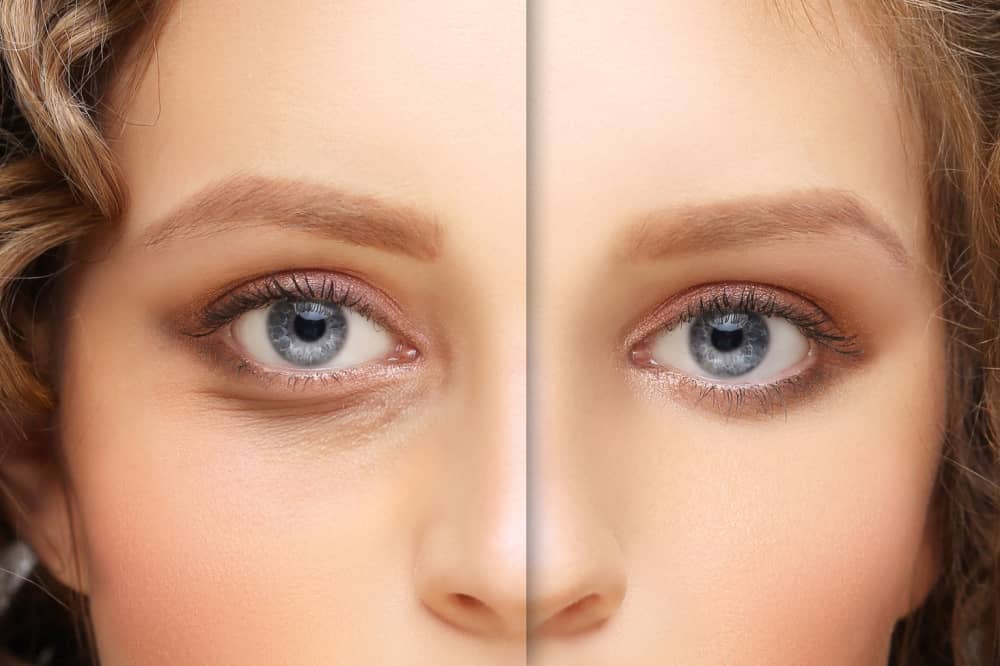
Under-eye bags – Causes, symptoms, and management
Do you often look in the mirror and notice bags under your eyes? Bags under the eyes are quite common and can range from genetics to lifestyle choices. This article will look at the causes of bags under the eyes and different management strategies that can help reduce their appearance. We will also cover some symptoms of bags under the eyes, so you can better recognize if it’s time to take action.
Under-eye bags – What they are
Eye bags are puffiness or swelling present under the eyes. They are often accompanied by dark circles, wrinkles, and sagging skin. You can look tired, older, and stressed when you have bags under your eyes.
Causes of bags under the eyes
The cause of bags under the eyes can be attributed to various factors, such as the following:
- Aging: The muscles and tissues supporting the eyelids weaken as we age, resulting in sagging skin and bags under the eyes.
- Genetics: Genetics may play a role in developing eye bags in some people. If your parents or close relatives have eye bags, you may also have a higher risk of developing them.
- Fluid retention: Fluid can accumulate under the eyes, causing puffiness. This can be due to excessive salt intake, allergies, or hormonal changes.
- Allergies: Inflammation and fluid retention can result in eye bags due to allergic reactions. Certain foods, pollen, dust mites, and pet dander are among the most common allergens.
- Lack of sleep: Blood vessels under the eyes can dilate when you don’t get enough sleep. This can result in puffiness and dark circles around the eyes.
- Sun exposure: Sun exposure can damage skin and cause eye bags due to its harmful UV rays.
- Food regimen: When you consume food with a lot of salt or processed foods, you may experience fluid retention as well as puffy eyes.
It’s important to note that the causes of eye bags can vary from person to person. Understanding and identifying the underlying cause is crucial for effective management and treatment.
Symptoms of under-eye bags
The appearance of bags under your eyes is often a result of various factors, but the symptoms that accompany this condition include the following:
- Puffy or swollen appearance of the under-eye area
- Dark circles or discoloration beneath the eyes
- Under-eye pain or discomfort that is mild to moderate
- Sensitivity to light or changes in vision
- Itching or dryness in the under-eye area
- The appearance of wrinkles or fine lines around the eyes
Management or treatment options for under-eye bags
The management of bags under the eyes involves identifying the underlying cause and addressing it accordingly. There are several treatment options available that can help reduce the appearance of eye bags and provide long-lasting results.
- Lifestyle changes: Lifestyle changes can improve the appearance of eye bags. These may include getting enough sleep, managing stress, and maintaining a healthy food regimen.
- Cold compresses: Applying a cold compress to the under-eye area can help reduce puffiness and inflammation. This can be done using a cold washcloth or chilled cucumber slices.
- Tea bags: Cold tea bags, such as green or chamomile tea, can reduce swelling and soothe under-eye puffiness.
- Fillers: It is possible to reduce the appearance of eye bags by injecting fillers, such as hyaluronic acid. This temporary solution may need to be repeated every few months.
- Laser therapy: Skin tightening and collagen production can be stimulated by laser treatments. It helps reduce the look of eye bags. This may require multiple sessions for optimal results.
- Blepharoplasty: In severe cases, surgical removal of extra skin and fat may be necessary to treat eye bags effectively. This is a more invasive option that requires recovery time.




